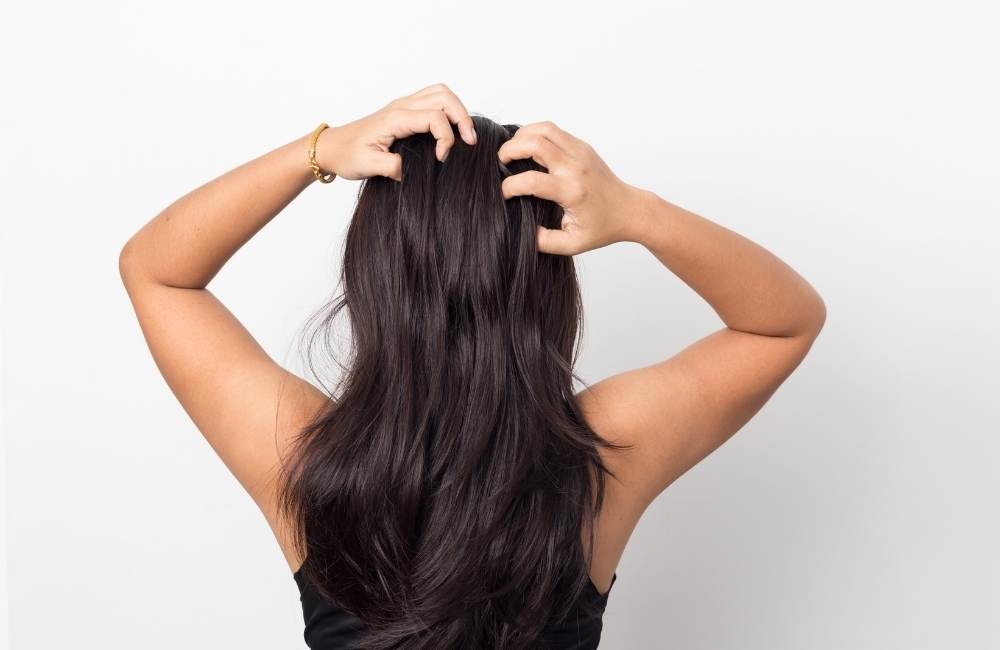Most people aren’t familiar with their hair type. This can create problems when shopping for hair care products because knowing your hair texture is essential in order to choose the perfect product that will make your hair look amazing.
Not to worry, there are a few factors that can help you figure out your hair type. This includes hair density, curl pattern, elasticity, and texture.

Here’s how to work out what kind of hair you have in regards to all of these factors and how to best look after your hair, depending on your hair type.
Contents
Texture
You can easily identify your hair texture by doing a simple test. But first, it is important to shampoo your air, air dry it and make sure not to apply any products or use styling tools so that it is in a state that is as natural as possible. Hair texture refers to the natural pattern of your locks. Wash and condition your hair and let it air dry naturally.
If your hair is naturally straight after air-drying, then you have straight hair. If you notice waves, especially the “S” pattern, then you have wavy hair. Those with curly hair will notice a loop pattern after washing and drying their hair. Last but not least, zig-zag and/or tight curls are commonly found in people with coily hair.
Porosity
Porosity is another factor that varies between hair types and plays an important role in keeping your hair healthy and moisturized. Hair porosity level is mainly used to identify your scalp’s ability to absorb moisture and haircare products. Figuring out your hair’s porosity level is essential for establishing the best hair care regimen for you.
The easiest way to determine your hair’s porosity is by sinking one strand of your hair into a bowl full of water. If it fully submerges in the water, then it indicates that your hair has high porosity. If the strand doesn’t reach the bottom but floats in the middle, it has a medium porosity level. Hair with a low porosity level will not sink at all but float on the top.
Hair with high porosity must not be exposed to the heat hair-styling appliances, as these products can leave your hair extremely fragile and dry. You must rather consider hair masks, oil treatments, and other hair care products to provide your hair with the care it deserves. For those with low porosity, it is important that you only apply hair care products when your hair is wet.
Hair Density
Hair density refers to the number of hair strands you have on your scalp. Hair density can vary depending on the hair diameter. You can easily test your hair density in front of the mirror. All you need to do is pull a big chunk of your hair aside and look at how much of your scalp is visible. If you have thick hair density, your scalp will be hardly visible when you pull your hair aside. However, if your scalp is easily visible, this indicates you have thin hair density.
Greasiness
Determining the greasiness level of your hair plays a crucial role in helping you work out how often you need to wash your scalp. This will also help you choose the right hair care products for your scalp. The major disadvantage of oily hair is that it is highly likely to develop residue faster than other hair types. If you have an oily scalp, you must wash it properly before going to bed.
Those with oily scalp need to wash their hair at least four or five times a week to avoid greasiness. If you have a normal scalp, then washing it twice a week will suffice. If you have a dry scalp, consider only washing your hair weekly and use hair care products that can help retain moisture and keep your hair hydrated throughout the day.
Curl Pattern
It is super easy to identity straight hair. If your hair doesn’t form any curl or waves after being washed and air-dried, you have straight hair.
Curly hair is further classified into a few types. Looser curls are classified as wavy hair, which includes three sub-types: thin wavy, medium wavy, and thick wavy. The diameter of your hair strands mostly decides what curl pattern you have.
You could have a curly hair pattern, which may look like an “S” after a hair wash. People with curly hair have a higher density of stands than those with wavy and straight hair types. No matter how many hair straightening or curly hair products you use, your locks will look curly. This hair type is also vulnerable to frizz and dryness, which you can deal with homemade hair masks. You could have loose, medium, and tight curls – depending on the diameter of each hair.
The takeaway
Just as it’s important to determine your skin type when selecting a skincare product or establishing your skincare routine, it is super important to identify your hair type before choosing hair care or styling products.
Your hair type will also affect your hair care routine, such as how often you should wash your hair. This isn’t only to do with whether your hair is curly or straight. You need to consider scalp moisture, porosity levels, and other factors when identifying your hair type.
Identifying the right hair type is half the battle won. Once you do that, taking care of your hair becomes easy. Thank you for this!